Preventing Falls At Home
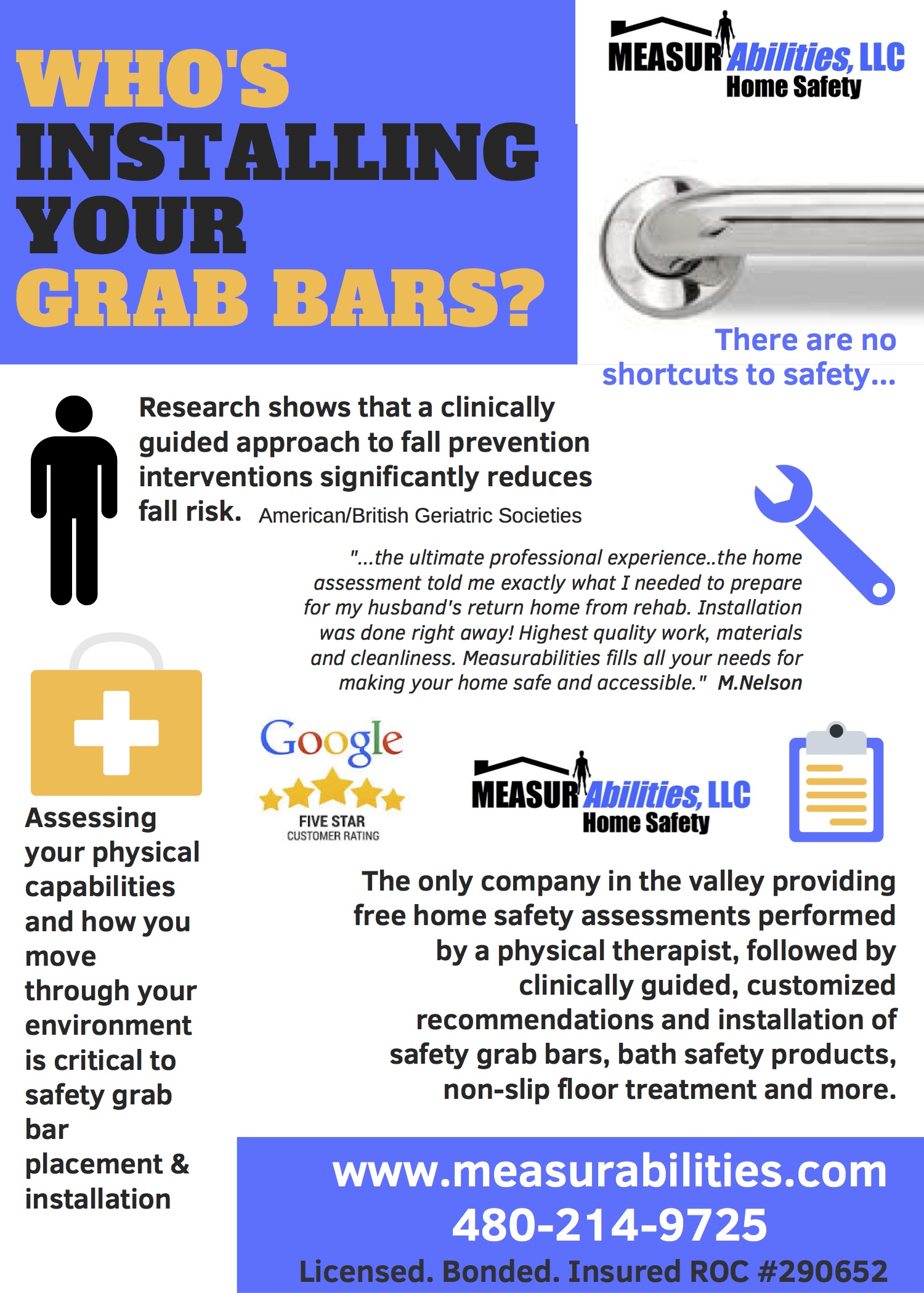
Related Posts
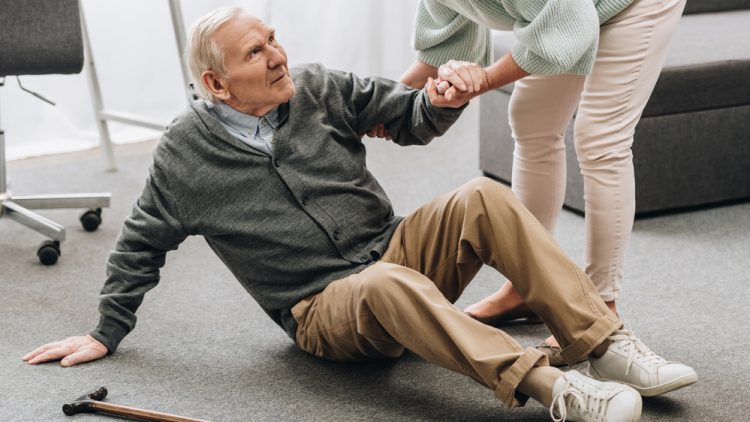

As we age, there is no doubt in our hearts we feel young. And although being young at heart is wonderful, this ethereal feeling is no match for the ever-changing state of our bodies and the status of our health.
As we age, changes take place with our health that can dramatically affect our ability to navigate our home environment safely. Although falls are not necessarily a part of aging, 40% of nursing home admissions are due to slip and fall accidents. These accidents can affect the course of our ability to be independent and live quality lives at home.
Of course walking around in bubble wrap to keep from falling in your home is not a doable solution – it’s hot, unsightly, and frankly not a fashion stopper. Many individuals elect to do nothing, feeling invincible. This denial can lead to unexpected accidents, which then brings you into crisis mode. However, seeking preventative solutions in advance of a potential crisis, is the most optimal way to stay safe while aging at home. Intervention IS prevention.
Top of your list should be a Home Safety Assessment. The American and British Geriatric Societies report, “ Multifactorial risk assessment and intervention strategies are effective in decreasing the rates of falls and have a similar risk reduction to that of other prevention measures such as statins for cardiovascular disease”.
What can I expect from a home safety assessment? Who will evaluate my environment? What happens following the assessment?
Our physical therapist provides a home safety assessment, during which time, not only will you be evaluated navigating your home environment, but the environment itself will be evaluated for safety hazards in a variety of rooms, including the bathroom, where falls occur most frequently in the home.
The therapist will make clinical recommendations based on your individual diagnosis or physical limitations to ensure optimal fall prevention safety outcomes, customized for you in your space.
We complete the process by providing and clinically installing all needed items. We provide a warranty for all of our products and services, and we are licensed, bonded and insured.
You may not have concerns about falling now, but denying that it’s a possibility puts you at greater risk. Once injuries occur from falls, often there is no turning back. Protect your health, independence and future, scheduled your clinically guided home safety assessment.
Related Posts

Related Posts
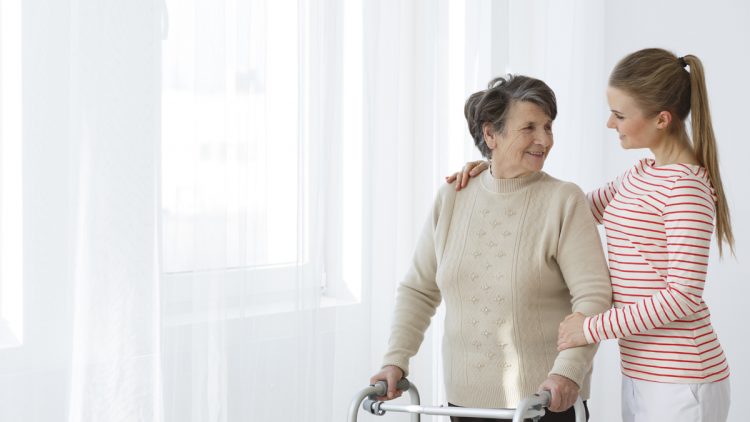
More and more individuals are opting for wheeled walkers, also known as rollators, over traditional models with no or only front wheels.
If you don’t have the strength or endurance to lift and push a standard walker all day, a wheeled walker can help you go around. There are a few different types of wheeled walkers to consider:
In this post, we’ll look at the benefits and drawbacks of utilizing a four-wheel walker.
Several people prefer 4 wheel walkers to normal walkers because of its enhanced mobility, stability, and seat alternatives.
A four-wheel walker assists you in maintaining your balance without exerting too much effort. You can still lean on your four legs, but the wheels allow you to move more rapidly and smoothly than you could with a walker without wheels.
A four-wheel walker is stable and long-lasting. If you’re looking for a rollator, you’ve probably heard there are three and four wheel options. Although three-wheeled walkers are quite versatile, they are not as stable as four-wheeled walkers. On four-wheel walkers, you can also put more weight.
The size of the 4-wheeled walker has the advantage of being able to accommodate a seat. There are even backrests on some of them. If you get fatigued while out and about, a seat on your walker allows you to stop and rest wherever you are.
All you have to do now is lock your rollator’s brakes and relax. Some types allow you to fold the backrest to make transporting the walker easier.
Even though you should take measurements before buying a rollator to determine what handle height is most comfortable for you, having adjustment choices is useful. Rollators with four wheels often have a wider range of adjustability than three-wheeled rollators.
For some people, a four-wheeled walker isn’t the greatest option. There are several reasons why you might prefer to use a different style of walker.
Wheeled walkers are designed for persons who need assistance with balance but not with weight bearing. A classic model may be ideal for you if you need to carry a substantial amount of your weight on a walker to get around.
Leaning too heavily on a wheeled walker can lead to control issues. Because of your weight, the rollator may travel faster than you’d want.
Your body weight has no bearing on whether or not you should use a wheeled walker. Bariatric walkers, in reality, are designed for persons who are overweight or obese. If you can’t support much of your own weight while walking, though, a wheel-less walker is the way to go.
A four-wheeled walker can help you move faster, but it doesn’t have a wide range of motion. A compact 3-wheel walker may be the ideal option for people who need to make fast turns and move in narrow spaces.
If a 4-wheel walker appears to be the best option for you, examine the following factors: height, wheel size, seats, and storage.
The most significant component of your walker is its height and overall measurements. Consider the product’s measurements to guarantee that you’ll be able to fit it through the locations you frequent. Make sure you know the height of your handles as well as the height of your product.
It’s also helpful to have a walker that can be adjusted in height. Depending on the shoes we’re wearing, our height can change slightly. You should be able to grasp your walker while maintaining a comfortable wrist angle.
Many people neglect the wheel size or choose small wheels because they appear natural. Large wheels, on the other hand, will be most useful. On uneven ground like cobblestone, little wheels can become wedged in crevices and cause problems.
Look for wheels that are at least 8 inches in diameter to be able to handle most terrain.
You should also consider whether you want a seat on your rollator. While some people do not require a seat, others find it extremely useful. There aren’t always benches available for you to rest on. You’ll appreciate being able to stop and rest anywhere if you suddenly become tired or experience acute joint pain.
Seats with cushioning or padding are suitable for persons who have hip problems. Another good alternative is a backrest, which will maintain your posture upright as you sleep.
Almost all rollators come with storage, whether it’s a basket, tray, bag, or all three. Select a model with sufficient storage space for your own belongings.
Baskets used to be the most popular storage option, but people are now realizing that they can be cumbersome and make foldable products more difficult to travel. Choose a rollator with a removable basket or storage units as an alternative.
Having a home safety assessment performed to identify fall risk and provide safety recommendations followed up by installation, can greatly reduce your risk of falls in your home environment. You are unique and your needs are too!
Related Posts

Three million workers were wounded or were ill as a result of their work tasks in 2014. Moreover, 4,679 workers were murdered in work-related accidents. Because the consequences of a worker’s disability or death are so severe, countries introduced workers’ compensation systems in the 1970s.
Employers pay workers’ compensation insurance to cover their employees. Employees can file a claim for benefits in the case of a job injury or illness, including pay loss benefits and medical benefits, among other things, to cover expenditures while they recuperate.
However, in order to file and process a claim, it is necessary to demonstrate the injury and objectively quantify the severity of the harm. It’s crucial to assess how much an injury or illness affects a worker’s capacity to fulfill their job duties.
Employers and insurers must evaluate whether a person is genuinely ready to return to work — and in what capacity — once he or she has healed and been approved to return to work. Insurers and businesses want to make sure that people don’t return to work too soon, putting themselves and others at risk. Some of these difficulties are addressed by a functional capacity evaluation (FCE) for workers’ compensation.
A functional capacity evaluation, in essence, aids in the assessment of damage or disability. A disability or damage can be visible at times. Determining how badly someone is hurt and how much their injury impacts their ability to work, on the other hand, is more difficult. An FCE is a professional who works to define injuries and professionally evaluate the level of ability in a systematic manner, which is often required to determine the appropriate amount of benefits. Instead of just designating all wounded workers as “incapable” or “damaged,” a functional capacity evaluation examines each worker individually to identify the best course of action.
A functional capacity evaluation is another technique to match an injured worker’s abilities to the employment needs. Each FCE is tailored to the worker’s unique ailment as well as his or her job title. The FCE’s job is to assess how well an employee’s existing talents match the job’s requirements.
If a postal worker’s employment requires them to carry sacks of mail and walk long distances, a functional capacity evaluation may include examining the worker’s ability to walk and handle high weights if they have had a back injury. If the FCE judges that the worker is unable to walk great distances, the worker may not be allowed to return to the same tasks, but may be able to work at a post office desk instead.
In another situation, an office worker with a similar injury might be cleared to return to work, or the FCE report might suggest that the person sit for no more than two hours at a time. Because every injury and sickness is unique, the functional capacity evaluation produces recommendations for each specific condition and person.
An attorney, an insurance carrier supplying workers’ compensation coverage, or your employer may order an FCE. The FCE is a set of examinations that assesses your physical ability in relation to your job. An evaluator certified to conduct these examinations will always administer the tests in an FCE.
A functional capacity evaluation is intended to be both safe and objective in its assessment of an accident or sickness. The tests that make up an FCE will assess a worker’s ability to:
If you have a handicap or illness, a functional capacity evaluation might help you evaluate if you can return to work. If you are able to return to work, an FCE can help you assess if you need to return to work in a limited capacity or whether you need to make special accommodations. In workers’ compensation situations, functional ability evaluations are critical because:
They can assist you in determining whether or not you are able to return to work. Trying to figure out when an employee will be able to return to work is a crucial part of the recovery process. The FCE is one instrument that can assist with data collection in order to answer this issue.
To avoid re-injury, they can assess whether you need to return to work at a reduced capacity. Returning to full work duties too soon can lead to re-injury, especially if a worker overstretches or pushes a muscle that hasn’t fully recovered. With every scenario, the goal is to assist an individual in returning to work in a safe manner.
A qualified evaluator can determine any limitations that the worker (or employer) must consider during a functional capacity evaluation. A functional capacity examination, for example, may reveal that a worker can only sit for two hours at a time or cannot move goods weighing more than 10 pounds. A worker may be told that they can only return to sedentary employment or that they can return to heavy-duty job. Knowing and following these principles can help you heal fully from a job injury.
They have the potential to avoid additional industrial injuries. Furthermore, recognizing a worker’s potential limits and dangers can help prevent harm to other workers. An FCE can help assess if a worker can lift large objects, for example, minimizing the danger that the employee will drop a big box on a coworker’s foot because they overestimated their abilities. A functional capacity evaluation lowers the risk by keeping workers out of the workplace if their capacity levels are insufficient for their responsibilities.
They can aid in the objective resolution of disagreements over the severity of an injury. A worker’s employer or insurer may disagree regarding the severity of a disability or injury. An FCE from a professional can help provide accurate information on capacity and readiness to work in certain scenarios.
They may be able to provide additional details regarding an injury or illness. Workers’ compensation claims are, in many respects, about accumulating a lot of facts. It might be tough to put a monetary value on an accident or illness. For example, depending on the worker, job requirements, and type of fracture, two employees with broken arms may have vastly varied work capacity. A functional capacity assessment gathers more data so that judgments can be made in each case individually.
They are more precise. Professionally conducted FCEs are more accurate in determining ability than wounded workers self-reporting their abilities, according to researchers. Part of the rationale is that, while a worker’s attitude and conviction about his or her ability can influence how well they perform on any test, a functional capacity assessment relies on standardized tests to assess actual ability. It is also administered by professionals who understand how to assess those abilities. They are one of the more accurate measures to determine ability to return to work, albeit they are not perfect.
They can assist you in determining whether you are eligible for workers’ compensation, Social Security, or other benefits. A functional capacity assessment can also help you figure out if you require occupational therapy or other types of assistance. In many circumstances, an FCE report will propose therapy or allow a worker to receive enough benefits, which will aid in their recovery.
They can aid in the prevention of insurance fraud. Insurance fraud costs the United States roughly $80 billion each year, and it raises rates and makes firms less competitive, putting jobs at risk. An employer whose employee has committed fraud may see their insurance costs skyrocket, making it difficult for them to acquire new employees or even stay in business. When a worker’s claims are evaluated, an FCE encourages them to return to work in some capacity as soon as they are able.
Related Posts



Seniors should value comfort, design and, of course, safety above all else when it comes to footwear. Here is a look at some of the best shoes to prevent falls.
Before picking out a pair of shoes, seniors need to know exactly which elements to look for in a new pair of shoes. Here are a few necessities:
Soles: Make sure the midsoles of the shoes are sturdy and not too flexible. This ensures stability during movement. Any shoe that is too flexible on the inside can easily cause falls within or outside the home. Sturdy shoes will be more slip resistant than brands featuring a flexible sole.
Closed Heels: Seniors should wear shoes with closed heals at all times. Oftentimes open heal shoes do not fit tightly enough, causing the foot to slide and create balance issues.
Size: Shoes that fit properly should be priority number one for the elderly. Shoes that are too big can cause falls, while shoes that are too small can easily cause discomfort. Try multiple pairs on before making any purchases.
Material/Design: Look for a pair of shoes that features a slip-resistant sole. A smooth sole can be slippery.
Weight: This is another important element to watch out for. Historically, heavy shoes have been a problem for seniors. If you have trouble lifting your feet to walk, falls will occur. The heels of the shoes should be no more than one inch in thickness.

Here are some of the best shoes for seniors today:
Featuring a lightly padded collar and cushioned 5Gen midsole, these are some of the best shoes for elderly women to wear in and around the house. These shoes will slip on and off easily, so neither of these processes will feel like a chore. For women wishing for a choice of colors, this pair works very well. A thick rubber sole provides extra grip, perfect for movement on any sort of surface. This pair is also very lightweight, too, making falls very uncommon. The Gen5 cushioning also keeps the pair comfortable for the long haul.
The only drawback to this pair is the somewhat high price tag, but the cost is worth it when it comes to safety. Comfort is another factor that the Tasha is not lacking in with its rubber outsole. These shoes feature a unique U-shaped design which is built into the sole. This helps support a natural gait.
New Balance has been popular for many years, known for its variety of wide offerings, ideal for those prioritizing comfort first. The 990 is a bit pricey like Tasha, but the shoes will last a very long time. Most seniors have commented on the great heal stability with the 990 pair. Multiple color options can make shopping a fun experience, as well.
This is the ultimate comfort footwear for senior men lounging around the house. The pros are endless: a long-wearing rubber on outsole, smooth leather upper and contoured removable EVA footbed. The leather uppers provide the perfect mix of support and comfort. Durable rubber soles are in place to prevent spills. These shoes can be offered with either laces or velcro.
If you are looking for a pair that resembles running shoes you may have worn years ago, this is your pair! These shoes are designed specifically to prevent falls, though, making them a popular choice for the older generations. The Strap Sneaker pair comes with a removable footbed, contoured heel stabilizer and a rubber outsole.
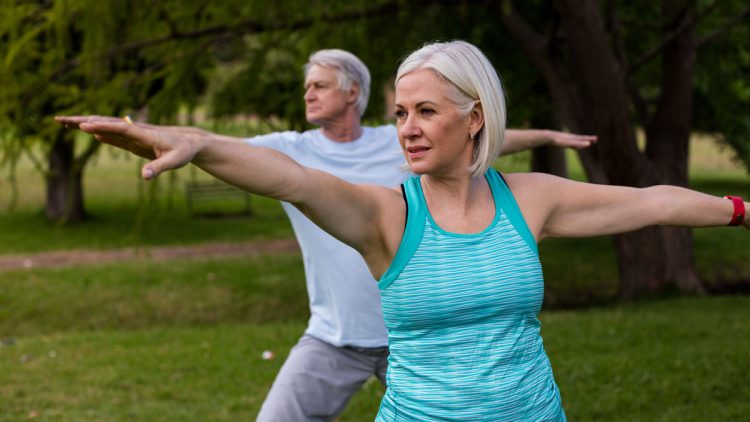
Although COVID-19 precautions take priority, here are some other ways senior can enjoy the summer in a healthy manner. Read on to learn more.
30 minutes a day of keeping your body moving to stay fit can help all seniors! Try new types of exercises, such as low impact aerobic exercises. The water helps to stabilize the body and strengthen the muscles. It’s a great option for those with osteoporosis because it reduces your risk of a bone fracture. Taking part in new exercises is a great way to meet new friends.
Dehydration can lead to heat stroke, which can be life threatening if it’s not treated. As people age it can become more difficult for their bodies to regulate their internal temperature. Senior’s may not feel thirsty, but it’s important to keep track of how much water they are drinking. Also, certain medications can lead to further effects of dehydration. All of these things leads to the importance of staying cool and hydrated. They should discuss with a doctor how much fluids they should be drinking a day. In the hot months seniors should have access to an AC system for efficient cooling down.
This super vitamin helps in keeping your bones strong. Have fun outside walking your dog, having a picnic, or playing with your grandchildren at a park. While spending time out and about make sure to protect your skin with sunscreen. Seniors are more vulnerable to the sun’s rays because of their thinning skin. Other forms of protection are wearing cotton shirts, pants, hats, and sunglasses. When out walking wear stabilizing shoes and beware of insect bites.
Related Posts

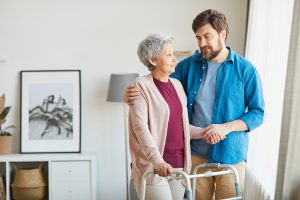
If you are searching for “fall prevention checklist” or “home safety“, this list will help you secure your floors, stairways, bedroom, bathroom and kitchen areas.
Source: https://uvahealth.com/sites/default/files/2018-08/Fall-Prevention-Checklist.pdf

Golf truly is a game for a lifetime and modern advances in golf equipment have kept seniors playing the game they love for longer. But whether you are a beginner or a seasoned player, it is a game where the appeal never fades. In this article, we are going to talk about the various categories of clubs. Although we will not be recommending particular brands, the information will be very useful in making your next golf purchases.
Just because you are getting on in years it does not mean you automatically need senior flex shafts in your clubs. But if your clubhead speed has lessened over the years, how you assemble your set of clubs may be the key to lower scores. Known as “set make-up” – it really comes down to putting the clubs in your bag that give you the best chance of playing well. The late Arnold Palmer played golf against the kids on the PGA Tour well into his seventies as well as playing senior golf. One of his secrets was he adapted his equipment. He put more flexible shafts in his clubs, increased the loft on his driver, added some fairway woods and hybrids as well as oversized cavity back irons, wedges he felt comfortable with and rocked the modern putter for many years. Let’s look at each category of equipment for some ideas. By the way, although you can buy new and get totally custom fitted, there is now a burgeoning used golf club market, especially online. You can save money and still get great playing golf clubs!
The USGA (United States Golf Association) has set rules regarding the flexibility of driver faces so any top make driver made after 2010 or so should have a similar amount of face flexing. The 4 things the senior should look for are these:
1. Loft. Loft is your friend in golf. The Chances are you do not hit the ball as far as you used too. And yes, you may still be able to hit it out there 250 yards, but it is a fair bet the average is a lot less. A way to pick up some additional yards is to improve the “carry” distance on your tee shots and more loft helps you to do that. A lot of manufacturers offer Drivers in the 12-15 degree range of loft and they are definitely worth checking out if you can leave your ego alone!
2. Shaft length and weight. Many drivers are 46 inches long, yet the average driver length on the PGA Tour is 44.5 inches long. If you try a shorter driver, you will surprise yourself how much easier it is to hit the sweet spot and gain yardage by trimming an inch to an inch and a half off the grip end. It will not really impact the shaft flex but you can always add a little lead tape to the head if you like (one of Arnold Palmer’s tricks!)
3. Face Angle. Nowadays many drivers come with adjustable face angles to help counteract a tendency to hook or slice the ball. If you are a slicer, some manufacturers offer drivers with offset heads to reduce the slice and improve the launch angle of the ball.
4. Head size. There are some seniors who are just not comfortable with the 400cc to 460cc head size on modern drivers. Although you will give up a little distance on all but the purest hits, looking at some old school titanium club heads in the 250cc to 350cc range may help you find some confidence you can square the club up at impact. This may be especially the case if the shaft is also shortened and the loft is at least 11 degrees. Another bonus is these clubs are often less than $20!
Much of what can be said for drivers can also apply to fairway woods. Unless you can hit a 3 wood higher than a one level house, it is a club you probably do not need unless you play in a climate with very firm fairways where you may be able to eek out some yardage because of the roll. A 5 wood (hugely popular on all tours these days) will probably work better for you. Look for one with 18 or 19 degrees of loft and for the average sized person, a shaft of no more than 42 inches. A 7 wood and or a 9 wood (with between 21 and 24 degrees of loft) is also a great club for the senior to use as they work very well out of the rough as well as the fairway and tee box. The 5 wood can replace a 1-2 iron, a 7 wood, a 3-4 iron and a 9 wood a 4-5 iron. If you are looking for additional height, a shallow faced club may help, if you are using them more off the tee and from the rough, a slightly deeper face may help. Hybrids are iron replacements and are usually slimmed down looking hollow headed clubs designed to replace the longer irons. For most seniors a 1,2, or 3 iron is not a user friendly club but adding a 5 or 7/9 Wood combo and starting with a couple of hybrids in the 4 or 5 Irons can make the game a lot easier. You can even buy iron sets entirely made from hybrids. These are not “cheater clubs.” Lot’s of top notch players of all ages often have two or more in the bag.
Assuming you have added a wood or a hybrid or two, your longest iron will probably be a 5 or a 6 iron. Cavity backed irons that spread their weight around the perimeter of the club is the way to go. Buying new or used, one of the most important things to get right is the lie angle (how the club is soled at impact with the ball.) Most golf clubs can be bent a couple of degrees in the neck area and with the help of a professional club fitter, this small adjustment to your irons may make shots a lot more accurate. Modern golf clubs are lofted stronger than clubs from the past. a Pitching Wedge in 1995 had around 48 degrees of loft, today 44 or 45 is commonplace as most sets now come with a Gap Wedge, an additional wedge of around 50 degree of loft before you get to the sand wedge (usually with around 56 degrees of loft.) Looking at some of the super senior professional golfers, it is notable, Gary Player, Jack Nicklaus, Tom Watson, Hale Irwin, Lee Trevino and many others do not carry a 60 degree wedge (also known as a Lob Wedge) so although you may want to carry one if you have a lot of hills and carries over sand traps around the greens on your home course, it is not by any stretch mandatory. A good sand wedge needs “bounce” on the sole (the number of degrees the back of the leading edge sits lower than the front of the leading edge.) If you play in wet conditions with a lot of fluffy sand in the bunkers, a sand wedge with 12 to 15 degrees of bounce is ideal. If you play on a course that is firm under foot with less sand in the traps, a sand wedge with 9 to 12 degrees of bounce will be a better weapon.
There is so much personal choice among putters. But whether you choose a traditional blade or centershaft putter, a Ping style heel to toe putter or one of the large and fashionable MOI putters, two things to look for. Most putters are too long for the user. You can cut it down and add weight with lead tape but take your putting stroke, see a professional and make sure your eyes are comfortable over the ball and then the right length of putter can be fathomed for you. Whatever design you choose, you will find a head weight that just feels ideal. Have fun trying different putters out and remember there are plenty of great putters on the used market!
Modern graphite shafts do not have the performance issues of graphite from the 1980’s but it is amazing to hear experienced golfers still say silly things like: “Graphite turns the club into a hook machine” or “It has too much torque.” From a scientific viewpoint, that is simply not the case any more with decent quality graphite shafts the major manufacturers use. With its lighter weight, graphite should be a must for a seniors in their woods and hybrids and probably their irons as well. Most off the rack wedges come with “Wedgeflex” shafts, these are inevitably stiff shafted. Throughout his career, Jack Nicklaus used a sand wedge with a soft flex shaft and even if you keep steel in the wedges, having them reshafted with a more flexible shaft can help a great deal. You do not have to go with senior flex but it is a fact most american male amateur golfers use stiff flex because of their ego, when a regular or even senior flex club may help them better. Try out different shafts with a competent club fitter and you may surprise yourself. Whatever grip you like the feel of can be assembled to suit your grip. If you have arthritis in your hands, the grip can be built up – many top senior pros do this to eliminate the grip taper on the lower half of the grip and to help with the vibration of the club at impact if they get sore and stiff hands.
Let’s take the example of Tom. Tom is a 65 year old male golfer with a swingspeed of 84 mph with a driver and 67 mph with a 6 Iron. His handicap is 12. He does not hit the ball as high or as far as he once used too. But he uses good course management and hits the ball pretty straight. He carries a 12 handicap and is capable of shooting 81-83 on a regular basis on a 6,100 yard par 72 golf course. Here is a suggested set make-up for him using senior flex shafts in the clubs:
Driver: 300-460cc (based on personal preference) driver head with 12-14 degrees of loft.
Wood: 5 Wood with 18 to 19 degrees of loft.
Hybrids: 4 and 5 Hybrids to replace the 4 and 5 Irons.
Irons: 6,7,8,9, Pitching Wedge and Gap Wedge – same model, same shaft.
Sand Wedge: 56 degrees with 12 degrees of bounce with a shaft, be it steel or graphite, of a similar flex profile to the other clubs.
Putter: Whatever he chooses!
That is only 12 clubs! The rules allow you 14 and you may find you do not need them but this set up gives you the room to add an additional fairway wood, maybe a 6 Hybrid Iron or a 60 degree wedge!
Related Posts